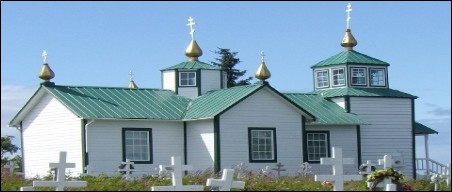
Church Planting by Teams
An Overview of Church Planting
- Summary: Professor Peter Wagner has said, “Planting new churches is the most effective evangelistic methodology known under heaven.” Church growth expert Dr. Elmer Towns reaffirmed this point, declaring that “God’s primary method of evangelizing an area is by planting a New Testament church to reach the area with the Gospel.” Allow me to share with you how one local church in Anchorage, Alaska, trained and sent forth 1,300 men, women, and children on 80 church-planting teams. The lead pastor of that church had received insight from God about making that church (and any church, including yours!) both a ministry-training and a church-planting center. Permit me to share a biblical pattern that can turn your congregation into a church capable of training its people and sending them forth in teams to plant new churches both at home and abroad.
I. Why Plant Churches?
A. Biblical Reasons for Planting New Churches
Genesis 1:12 reveals to us the biblical principle of reproducing according to our kind — “The land produced vegetation: plants bearing seed according to their kinds and trees bearing fruit with seed in it according to their kinds. And God saw that it was good.” This pattern is repeated in five more verses of the bible’s very first chapter. At the creation, God in His wisdom established His “good” pattern of reproduction — that is, after our kinds. For example, apple trees reproduce apple trees, sheep give birth to sheep, people beget people, and churches reproduce churches! It is not the job of distant seminaries, detached from the local churches, to spawn new churches. No! Follow the biblical principle, and you will find that churches and their people beget new churches. That is a foundational principle in our study of church planting by teams. And we will see how your church can become involved in this exciting ministry of church multiplication.
There is a biblical pattern of “sowing and reaping” found throughout Scripture. “A man reaps what he sows” (Galatians 6:7). Let’s apply this principle to our “good seed” — that is, God’s people and His word. If we sow well-trained, dedicated Christians into the world to share God’s Word and to plant new churches, we will reap what we have sown — that is, more Christians, full of God’s Word, who will in turn share their faith with still others.
Church planting is necessary for the fulfillment of Christ’s Great Commission: “Therefore go and make disciples of all nations, baptizing them in the name of the Father and of the Son and of the Holy Spirit, and teaching them to obey everything I have commanded you. And surely I am with you always, to the very end of the age” (Matthew 28:19-20). If believers don’t “go,” the nations will not be reached. Jesus has called us to go and spread His Gospel in all nations (including our own!) and to baptize, teach, and make disciples. Conversion to Christ can occur anywhere, even all alone in your room, as happened to me when I received Jesus Christ as my Savior and was born again. But “disciples” are properly taught, trained, and brought to maturity in local churches. The more churches we plant, the more disciples can be raised up unto the Lord.
In Acts 1:5 Jesus told His disciples that they would “be baptized with the Holy Spirit.” This empowered them to be effective witnesses to Christ, as Jesus said in verse 8: “…you will receive power when the Holy Spirit comes on you; and you will be my witnesses in Jerusalem, and in all Judea and Samaria, and to the ends of the earth.” The rest of the Book of Acts shows that, when they went forth to Judea and Samaria (nearby) and to the nations (far off) and preached the Gospel in the power of the Holy Spirit, churches were born!
B. Some Practical Reasons for Planting New Churches
The need is great. I recall reading some years ago that in Europe alone there were about 250,000 towns and villages that had no evangelical center or church.
Research in American churches shows that newer, smaller churches are more effective in evangelism than are larger, older churches. That has been my experience in helping our church in Alaska train, put together, and send forth dozens of new church plants. New, young churches tend to reach out to the lost and experience church growth in substantial measure through salvations, not just by people transferring from one church to another.
Billions of this world’s people are not yet saved. Millions of new churches, filled with on-fire believers sharing their faith, will be needed to reach those billions of lost souls for Jesus and to train them in the Christian faith.
II. Some of the Most Common Methods of Church Planting
Mother-daughter church planting — In this method, one church sends some of its members to another part of the same town or outlying areas to plant a new church. Our church in Anchorage, Abbott Loop Community Church, did this back in the 1970s, sending several dozen members of our church to a location closer to downtown. This church plant did well, it grew, and it had an excellent outreach to the unsaved, including the many street people. This is a local variation, and a good one, of sending church-planting teams to more distant locations.
A bible study group — This method is common and effective in the USA. I once heard Pastor Chuck Smith say that they had started a number of their Calvary churches this way. The church planter, sometimes with a team, goes to a new area, starts a Bible study, gathers a nucleus of people, and turns the growing Bible study into a local church. Our Anchorage church planted several churches in Alaska using this method.
The pioneering church planter — This is usually a couple that moves alone to a new area and attempts to plant a new church. This has been done frequently over the centuries. But problems of loneliness, isolation, and a narrow range of spiritual gifts in just one couple (or solo pastor) have historically made this generally a less effective church planting method.
There are a number of other church-planting methods, with varying degrees of success. But let’s move specifically to our focus today, and that is training and sending church-planting
Church planting by teams is a proven, successful method that you can use in your church. This involves the local church sending a pioneering pastor, plus a team of well-trained, committed Christians with him, to plant a new church in another city, state, province, or nation. This team method of Great Commission ministry is entirely Scriptural:
- • The apostle Peter was accompanied by six men as he brought the Gospel to Caesarea (Acts 10).
- • An ethnically diverse group of Christians established the famous Antioch church (Acts 11:19-21).
- • From Acts 13 to Acts 19 we see the apostle Paul planting numerous churches accompanied by teams of Christians — for example, “Paul and his company” (Acts 13:13).
- • The very first church, the one founded by Jesus in Jerusalem, was a team ministry that involved the original apostles as well as other unnamed disciples.
III. The Church-Planting Ministry of Abbott Loop Community Church, Anchorage, Alaska
Abbott Loop Community Church (now known as "Unite Church") is a large, Spirit-filled church in Anchorage, Alaska. It was founded in 1959 by a team led by Pastor Dick Benjamin (Its name was originally Abbott Loop Chapel, then later Abbott Loop Christian Center). Eight years later, in 1967, Pastor Benjamin and the Abbott Loop church sent its first team, a group of 22 people, to plant a church in nearby Peters Creek, Alaska. That church continues to this day (2016). Since that time, many more church-planting teams have been sent out. I had the privilege of leading and pastoring a church planting team that was sent in 1980 from Alaska to pioneer a church just north of New York City, then again in 1989 leading a team to establish a new church plant in Medford, Oregon.
I pastored those churches in New York and in Oregon for 22 years. In the process I lost an exact count of the number of teams sent out from the Alaska church. But I have been reliably informed that over the years the numbers grew to 80 church-planting teams sent out, with about 1,300 team members, to start new local churches in fulfillment of the Great Commission.
In sum, church planting by the team method is a proven, biblically sound strategy to reach the multitudes of the world for Jesus Christ. We used this method with much success sending teams from Alaska. The Scriptural principles are the same and are effective in any language and in any nation. Church planting by teams of well-trained, dedicated Christians is an effective method of evangelizing the world. And it is a methodology available to all churches of any size.
In the next four articles I will share with you how your church can become a ministry-training and church-planting center. The truths I will share in these sessions are part of a very comprehensive video bible-training and ministry-preparation curriculum — the International School of Ministry (ISOM). Founded by Dr. Berin Gilfillan, ISOM as of 2024 had over 20,000 training schools in over 150 nations and in more than 110 languages. There are also Bachelor’s and Master’s degree tracks. The late evangelist, Dr. T.L. Osborn, said of ISOM, “As far as I know, the development of this curriculum is the most important thing happening on the earth for the kingdom of God today.” Pastors, other church leaders, and interested bible students, the school’s staff will be happy to send you a free information packet on the ISOM training ministry. Visit their website for information at https://ministrydegree.org/isom. [Full disclosure: I have no financial benefit from my relationship with ISOM. I consider it a privilege to freely recommend them to you as one of the few ministries today literally reaching the world for Jesus.]
We have now completed Part One, our Overview of Church Planting. Please continue on by clicking the next topic, Part Two below, in our series on Church Planting by Teams:
Part Two — The Local Church As a Ministry Training Center
Part Three — Counseling of Future Ministers in the Local Church
Part Four — Identifying Church-Planting Teams in the Local Church
Part Five — Preparing and Sending the Church-Planting Team from the Local Church
Subscribe
-------------------------
Shortcuts to Major Topics:
Christian Living
Doctrine & Theology
Evangelism
Faith
Gifts of the Holy Spirit
Healing
Hearing from God
Holy Spirit | Pentecostal Topics
Jesus Christ
Ministry
Power of God
Prayer
Salvation
The Church
Various Topics Not Listed Elsewhere
Victory over the Devil
Word of God
Sharing is great!
If you've been encouraged by our
sermon on Church Planting by Teams (Methods & Overview)
please share it with your friends.
Email them the browser link. Or
you can post the link on your social
media (Facebook, Twitter, etc.).
Thank you for sharing God's Word!
©2016, James H. Feeney.
Copyright statement.
Pentecostal Sermons and Bible Studies
by Pastor Jim Feeney, Ph.D.